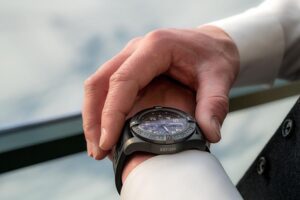How to Get More Life Out of Your Watch
Your watch is an investment. It’s important to treat it that way if you want to get maximum mileage out of it.
Classic watches are like classic cars. They can hold–and even increase–their value over time if they are well cared for. Besides that, there’s a lot of joy in ownership–as long as they function well. Here are some ideas for squeezing every last drop of life out of your timepiece.

Store with Care: Proper storage goes a long way for proper watch function. Keep your watch collection stored at room temperature with low humidity. Avoid quick temperature changes and especially overly hot environments.
If you live in a humid part of the country then simply throw one of those small silica desiccant bags from your bottle of vitamins or a few uncooked grains of rice into your watch box or case to keep the relative humidity at lower levels.
Make Mindful Adjustments: Routine adjustments to the time and date functions of classic watches are a part of ownership–but not necessarily one that everyone plans on. If you approach these adjustments with care, you can keep things ticking along without interruption. Here are a few guidelines:
- When it comes to adjusting the time and date, the most important rule to follow is to avoid doing this during the “danger zone” of 9pm and 3am. This window is when your watch is engaging the date change mechanism, and loosening the crown to make adjustments in this window can damage the gears.
- When changing the time, remember to always move the time forward for making adjustments, not backwards. For example, when “falling back” an hour when Daylight Savings Time ends in November, just move your watch forward 23 hours rather than winding it backwards one hour.
- Don’t wind or adjust the time of the watch while wearing it on your wrist. Physically engaging the crown for these things while the watch is on your wrist can lead to a bent stem, overwinding, and accidental crown loosening.
Again, getting into the simple habit of doing these things carefully and mindfully is your best bet for avoiding accidental damage.
Avoid Water: Moisture is never welcome behind the casing of your watch. Keeping the internal mechanisms dry and rust free helps preserve the gears, springs, and other delicate mechanisms. The main entry points for water are the crown and pushers, so keeping the manufacturer’s seals in place around these areas is the best way to prevent water from making its way in.
● The Crown – A properly closed crown will keep the moisture out, but many of the push-pull type crowns can accidentally be jostled out from the fully closed position in the course of normal wear. If you have this type of crown then always pause a second before immersing your watch in water to make sure that your crown is in the fully closed position.
If your watch has a screw-down crown then it is much less likely to partially unscrew and loosen the water proof seal, but an ounce of prevention is worth a pound of cure here, too. It’s worth it to occasionally make sure it is screwed in to the proper degree.
● Pushers – Here’s the simple rule when it comes to using pushers while under water. Don’t. The water resistant seal around the pusher mechanism works great when the pusher is stationary, but using it underwater can easily allow water through the seal.
Address Hard Impacts: Whether knocking your watch on a counter edge as you walk by or accidentally dropping it onto a marble floor, these hard impacts can cause far more damage than just a small scratch on the case.
A cracked crystal is obvious and should get your attention right away. However, internal damage to the finer mechanisms is possible in these instances as well. Even the most robust watches should be given a little extra attention after they’ve experienced a hard impact.
Resist Magnetism: Electromagnetic fields permeate our modern world. Fortunately, few of them influence our watches, but it still makes sense to avoid placing your watch in or on known high-level sources like phone chargers, more powerful electronics and speakers, MRI machines, and even refrigerator magnets.
Some watches are explicitly rated for withstanding magnetic fields, but unless you’re certain yours is built with this in mind then stick with the “better safe than sorry” approach here.
Tinker with Caution: Custom straps have always been popular, and these days many aficionados have sought out other ways to modify their watches. Be careful if you ever decide to open the watch and tinker with the internals. While online videos make some of these things look easy, one small mistake on your part can cause lots of complications.
It’s a good idea to pause before opening the case to ask yourself if you really feel good about proceeding. It might be prudent to leave your Rolex or Cartier watch repair to the pros and find other ways to scratch your tinkering itch.
And those custom straps? Double check all the pins or latches once you have finished installing them. A bad strap installation can lead to hard impact drops, or even worse, a lost watch.
Final note here, whenever you have removed a screw in crown for any reason always be patient and attentive to getting it threaded properly when putting it back in. Both cross threading and over tightening can lead to moisture damage and other expensive repair needs.
Stay up on Maintenance: Last but not least, routine maintenance and service is an important part of watch ownership. A routine service visit should be scheduled every few years to get ahead of potential problems and to keep your watch aging like a classic.

